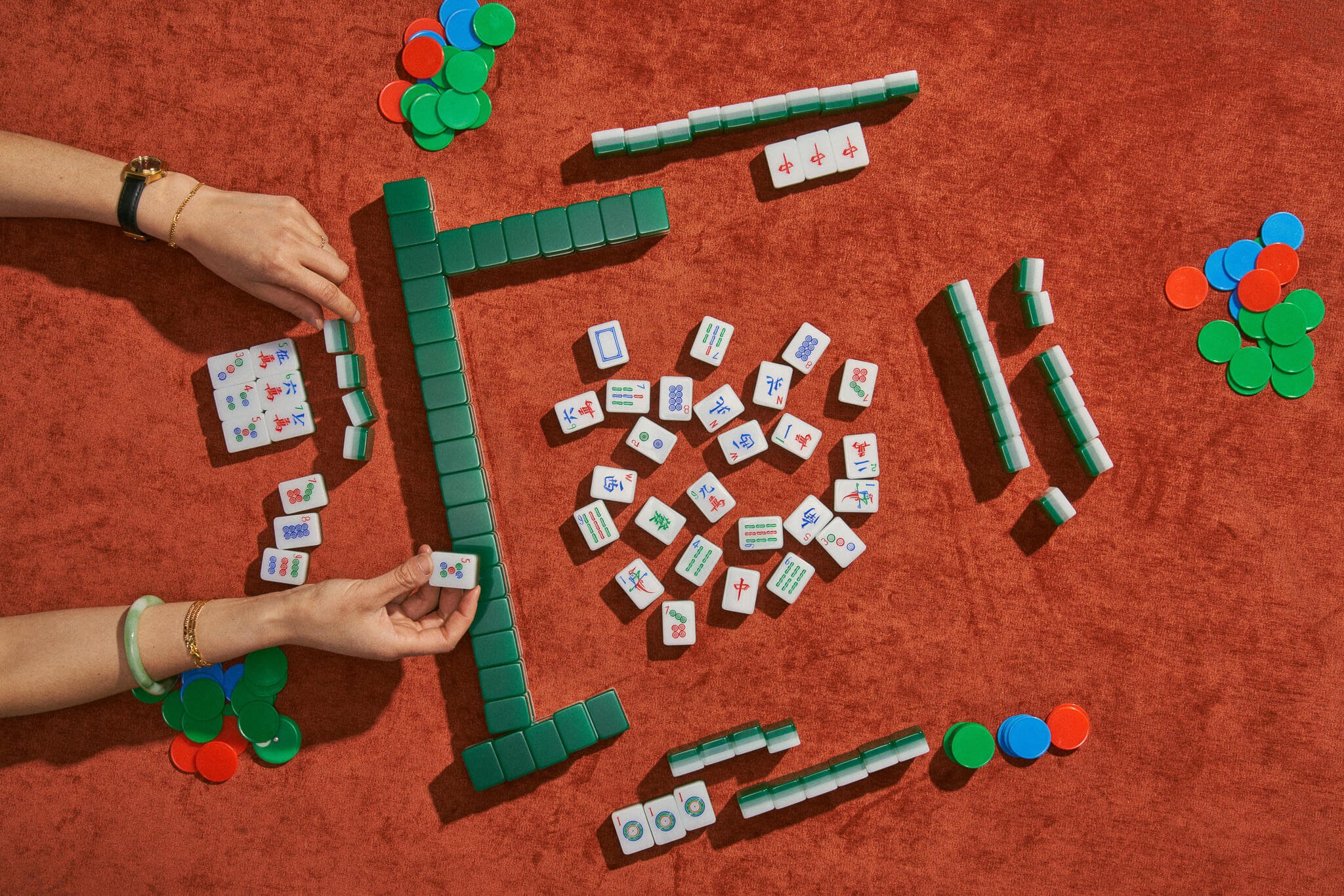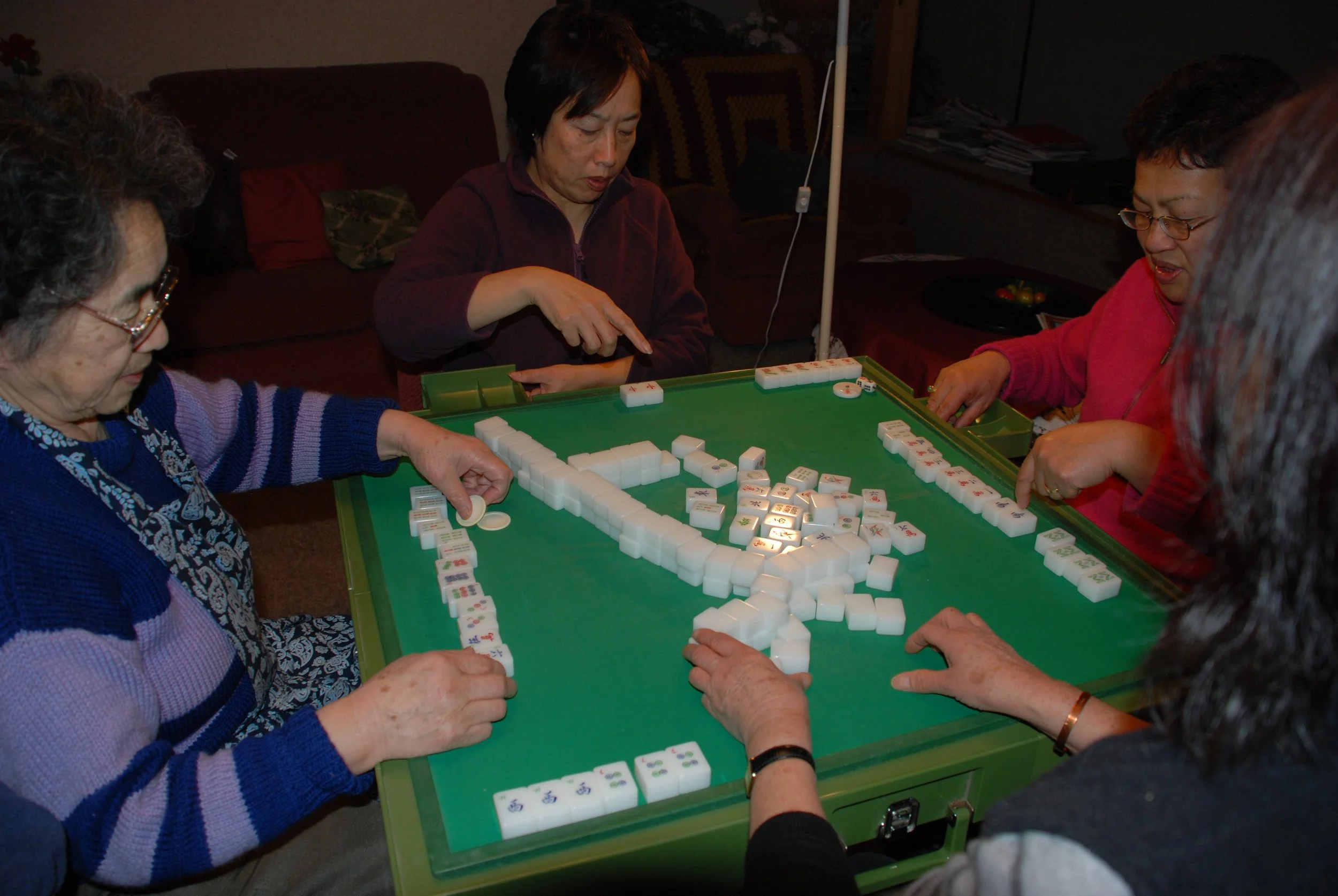
HOW TO PLAY
Game Structure
1 Complete Game
4 Hands (minimum) x 4 Rounds
ROUNDS
A round is completed when each player has had a turn at being the Banker. If the Banker wins the hand, they remain the Banker, so there is no limit to how many hands there can be in one round. A game can truly go all night!
Each round is named after a wind: East Round, South Round, West Round, North Round (played in this order). The round determines one of the two winds that each player can use to add value to their hand.
HANDS
The goal of each hand is to be the first player to put together all of their tiles into sequences of sets and/or runs, plus a matched pair of any two tiles.
1 complete game has a minimum of 16 hands.
Sequences
SETS
Collecting sets of tiles is a way to get closer to completing a hand. A set can be three (“pung”) or four (“kong”) identical tiles.
Three of a Kind
A collection of three identical tiles. Also known as a “pung” or “triplet.” May be held in your hand and revealed at the end (“closed set”); or created by picking up a discarded tile from any player (“open set”) and displayed immediately for all players to see.
Four of a Kind
A collection of four identical tiles. Also known as a “kong” or a “four.” Created when a player already has a set of three in their hand and picks up the fourth from a discarded tile from any player (“open set of 4”) ; or, by picking up the fourth tile directly from the wall (“closed set of 4”).
In either situation, the kong must be displayed immediately in order to claim it. With a closed set of four, keep two tiles face down for easier reference when scoring at the end of the hand.
After a kong is displayed, the player draws an additional tile from the very back of the wall (a “bonus tile”) to compensate for the extra tile laid down in the kong, and then discards to complete their turn. Play continues to the right.
You can’t create a kong by having a pung already displayed and then picking up someone’s discarded fourth tile. However, if you already have a pung displayed and pick up the fourth tile yourself from the wall, you may upgrade your pung to a kong!
Value Sets
A “pung” or “kong” consisting of value tiles, which are any of the dragon tiles OR winds that match a player’s wind position. Sets of dragon tiles score extra points for any player (see scoring for details); whereas sets of wind tiles must match the round’s wind or a player’s wind seat in order to score extra points.
RUNS
A collection of three consecutive tiles of one suit. Also known as a “shung” or “chow.” May be held in your hand and revealed at the end; or created by picking up a discarded tile ONLY from the player to your left and displayed immediately. You CANNOT play out of turn to complete a run, UNLESS it is to win the hand.
“Terminal runs” are 1-2-3 or 7-8-9, and may be harder to put together than runs with tiles 2 through 8, which have more options to complete.
EYES
Players need to include a pair of identical tiles (“two of a kind” or “eyes”) in order to win the hand. The eyes are only revealed at the very end, and may be kept concealed OR assembled from a discarded tile from any player to win the hand.
The Order of Play
1. The Banker starts by discarding the 14th tile they do not want into the center of the table, facing up so the tiles are visible to other players.
2. The player to their right goes next. They have the option to pick a tile off the wall — following the direction the tiles were drawn — OR, they may pick up the most recently discarded tile ONLY if it completes a set or run. The completed set or run must be displayed immediately, and the player then discards a tile to complete their turn.
3. If the player picked a tile off the wall, the player decides if they want to keep that tile. If so, they must discard one of their other tiles. If the player does not want to keep the drawn tile, they discard it immediately.
4. Play continues with players taking tiles from the discard pile or off the wall in order to complete sequences of sets and runs.
HOT TIP
The basic rules of mahjong are similar to other trick-taking games like rummy or spades.
Playing Out of Turn
A player may play out of turn if a discarded tile completes a set; or, to WIN the hand. To signal they want to play out of turn, the player must say ‘PUNG!’ (for a set of 3) or ‘KONG!’ (for a set of 4), grab the tile, and display the set immediately in front of them. The player then discards a tile to complete their turn, and the order of play continues from this position -- potentially resulting in skipped turns for other players.
A player who wants the tile for a pung or kong overrides a player who wants it for a run/shung.
Reminders:
When completing a set of four, don’t forget to draw a tile from the back of the wall before discarding.
A player may not play out of turn to complete a RUN.
Discarding Tiles
Once a tile is discarded and the next player does not pick it up, or no ‘pungs’ are called, the tile is dead for the rest of the hand. All discarded tiles remain facing up in the middle of the table for the rest of the hand.
As the hand continues, players will display completed sets and runs that they have collected.
Some players are likely to have completed sets and runs concealed in their hand, that other players can’t see. They have achieved this by drawing tiles from the wall without having to pick-up from the discard pile. Therefore a player may win a hand having not displayed anything at all over the course of their turns - and they will be rewarded for their lucky pick-ups with points!
HOT TIP
A player decides what to discard based on whether the drawn cards can help put together sequences of sets and runs. But in addition, taking note of the already-discarded tiles can help you determine your game strategy.
If a tile you are thinking of discarding has already been discarded, it’s more likely other players won’t want to pick it up. However, discarding dragons or winds late in the hand is always risky!
Winning the Hand
A winning hand is composed of four groupings of sets and/or runs, plus a pair - typically totaling fourteen tiles (more tiles if there is a kong in the winning hand). There is no discard when winning a hand. Typically, you might pick up the winning tile from another player’s discarded tiles, but if you’re really lucky it can also be picked up from the wall on a player’s regular turn.
A player may grab a winning tile out of turn if it is discarded by any other player. If multiple people reach for the tile in order to win, then the player with the next closest turn wins the tile and the hand.
To make sure the moment doesn’t pass you by, you have to call: “Suk!” “(Eat!)” or simply “Mahjong!” to let the others know you’re in the money. Pick up that tile and dramatically lay down the rest to prove you have won.
It’s unlikely, but the last 14 tiles at the end of the wall are reserved and will never be revealed during play (this is typically the last 7 stacks, unless there have been kongs). The player who takes the last tile (ie. the 15th tile from the end) does not have to discard or disclose their last pick-up if it doesn’t complete their own hand. With no winner, the hand is a draw (ie. stalemate) and no points are awarded. The Banker does not change (unless there is a kong on the table), and the tiles are re-shuffled and dealt again.
HOT TIP
Calling “Suk!” or “Mahjong!” is not as mandatory as saying something like, “Go fish!” Or “Uno!” but it feels great to say.
Once a player calls “Mahjong!” the hand is over. All players will score points based on the tiles they have at that time, both displayed and concealed.
If my grandmother was ‘calling’ (as in, she was waiting on her winning card to come up), she was known to rifle through the wall to see how many tiles away she was from winning. Others would consider that bad form, but she could always get away with it!
Play it Again
Congrats! You have finished…. one hand :)
Skip over to scoring to learn more about counting up your points for the hand. Or, if you don’t want to keep score, then it’s just time to play again! Reshuffle all 136 titles and re-stack 4 new walls.
If the Banker won the hand, then the wind positions do not change and the same player remains in position as the Banker. If the Banker did not win, then the role of Banker moves to the right, along with each player’s wind seat. Players don’t physically change seats, just the orientation of the table.
To learn more about wind positions and how they add an additional dynamic to the game, check out the strategy page.









